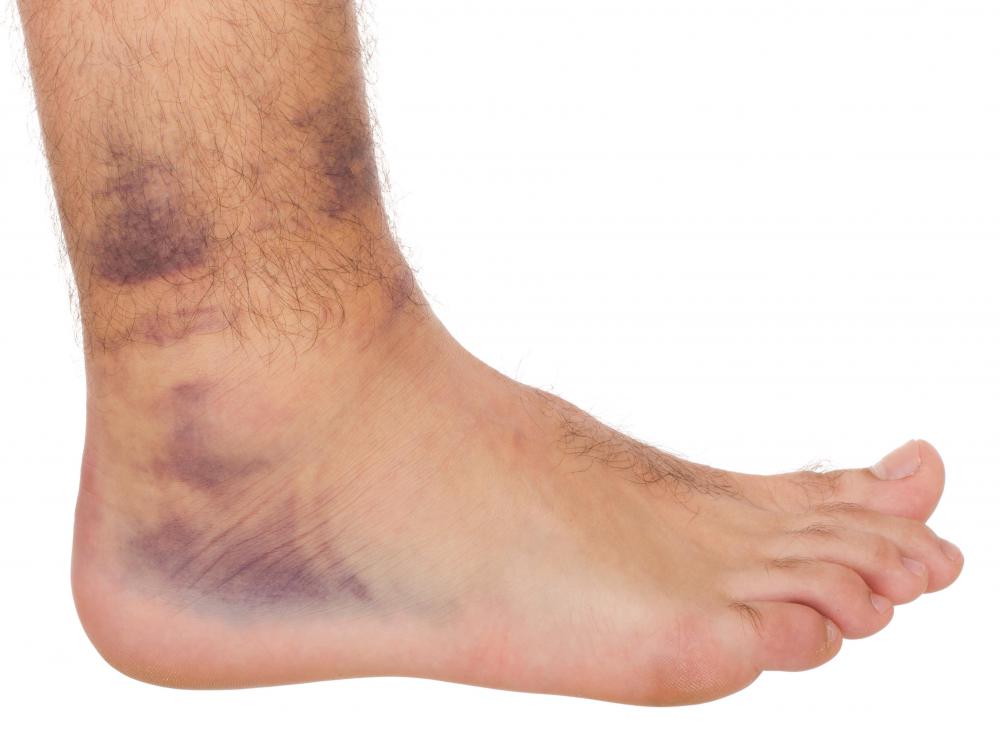At TheHealthBoard, we're committed to delivering accurate, trustworthy information. Our expert-authored content is rigorously fact-checked and sourced from credible authorities. Discover how we uphold the highest standards in providing you with reliable knowledge.
What does an Ankle MRI Show?
Magnetic resonance imaging (MRI) provides highly detailed pictures to help medical professionals diagnose a wide variety of illnesses and conditions. Those experiencing ankle pain may be sent for an MRI exam of the ankle. Healthcare providers use an ankle MRI to diagnose injuries to the bones, tendons, ligaments and cartilage of the ankle. The image will also show tumors, infection and arthritis.
Various tendons and ligaments in the ankle, including the Achilles tendon, provide flexibility and range of motion. Movements forcing the ankle into awkward positions outside the typical range of motion can result in damage to the tendons and ligaments of the ankle. An ankle MRI will show tears and ruptures of these tendons and ligaments. For the majority of ankle tendon and ligament injuries, an MRI provides the only reliable way to diagnose the injury.

Ankle cartilage can thin with age and show signs of wear and tear over the course of time. Images produced using an MRI can help provide a clear picture of any damage or deterioration to the cartilage. This includes tears and fraying of the cartilage.
Bones of the ankle, including the talus and calcaneus, and bones of the foot show up on an MRI of the ankle. MRI images provide evidence of bone breaks and fractures. With these images, radiologists can also see bruises of the bone, dislocations, and arthritic conditions such as osteoarthritis.
Beyond showing structural damage within the ankle joint, an MRI can also provide a clear picture of other injuries and diseases in the ankle region. For example, it can show tumors and pinpoint infections and fluid collection within the ankle joint.

An ankle MRI also offers a look at the bones of the lower leg that help make up the ankle joint, such as the tibia and fibula, as well as the muscles of the foot. Fractures or breaks in the lower portion of the tibia and fibula will show up. In addition, any strains or tears of the foot muscles will also be visible.
Images produced by an MRI can help a medical professional to diagnose problems with the ankle and its supporting structures, and they also can provide guidance for surgical procedures and treatment. By using an injectable contrast, the veins and arteries running through the ankle show up on the MRI. These images provide a roadmap for surgeons to make repairs to broken bones, torn ligaments, and ruptured tendons.
AS FEATURED ON:
AS FEATURED ON:

















Discussion Comments
When my daughter was in her senior year of high school, she had a foot and ankle injury when she was playing soccer.
The first thing they did was take an x-ray. They still wanted a better picture of what was going on, so she had an MRI done of her ankle, foot and leg.
They found two hairline fractures that showed up on the MRI that could not be seen from the x-rays. Her injury could have been much worse, and I am glad they have this kind of testing equipment that gives them a better idea of what happened.
It took about 30 minutes for them to complete the MRI. She was not able to play soccer for the rest of the season, which was a big disappointment for her, but at least she did not have any permanent damage.
I find it fascinating how much information the doctors can get from an MRI. I have had one done on one of my ankles and my back. I don't have much pain tolerance, so am glad they are not painful.
I tripped going down the stairs and my ankle got twisted on the fall down. My MRI showed that some tendons were injured and it did show that I had some arthritis developing in my ankle joints. All the bones around my ankle and feet were OK though.
If your doctor recommends you have an MRI done, I would make sure your insurance company will approve the scan before you go ahead with it.
When I was playing a game of volleyball I twisted my ankle and it immediately swelled up. I didn't do anything about it for a few days other than keep some ice on it.
The swelling didn't go down and it was very bruised and I could not put any weight on it. After I saw the doctor he advised me to get an MRI so they could get a better picture of what was going on.
Thankfully, there was no major damage and no arthritis, so I just had to give it time to heal on its own. I was surprised at how long it took for the swelling to completely go down.
Just one game of volleyball, and I couldn't do much for the rest of the summer. I still find myself favoring my other ankle once in awhile even though the twisted ankle has completely healed.
Post your comments